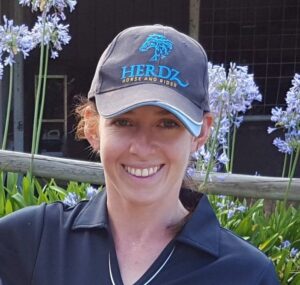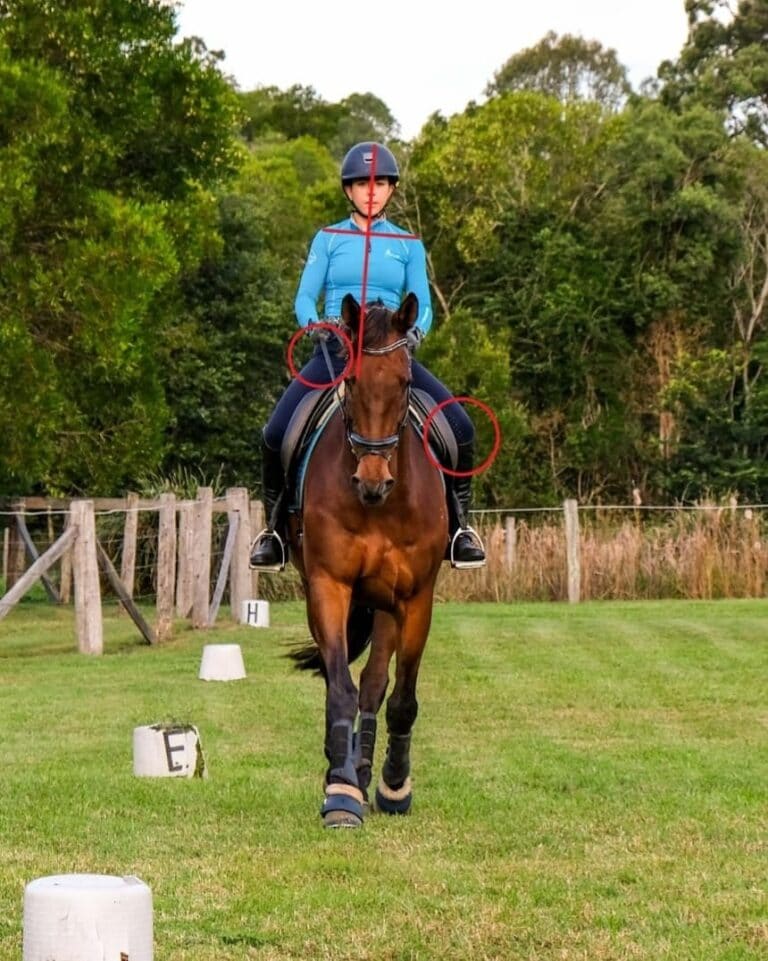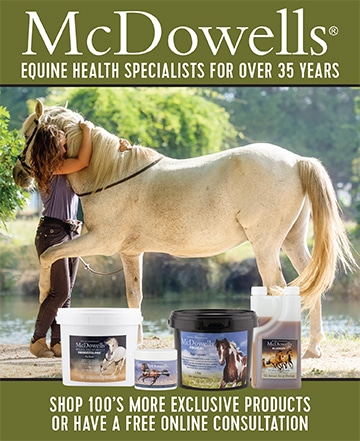This article is part two of the rider biomechanics series, where I talk to Natasha Gunston of the Eventing Physiologist on what makes us ride well, how crookedness affects our horse’s performance, and what we can do to achieve a stronger and more stable position.
In Part 1 we discussed the basics of rider biomechanics, which is essentially looking at the rider’s ability to move and position their body in the ways that riding demands.
Unlike most other sports, riders have the added difficulty of stabilising against a multitude of directional forces (forward and backward, side to side, twisting, upward and downward), all while maintaining a good position and applying the aids correctly. This means that the physical ability to ride well doesn’t depend on strength and power output as much as the ability to activate the correct muscles to stabilise against these forces.
Most challenges with our position are caused by muscles on one side being weaker than the other. This subsequently affects the horse’s performance and eventually their own movement. This means that improving our biomechanics relies on recognising and strengthening these weaker muscles so that they can activate correctly.
In this article we look at three steps you can take to identify any unevenness in your position, and how they can be fixed with some help from your physio.
1. Check the wear marks on your gear
Natasha says the first step to check for unevenness is by looking at the wear marks on your gear.
Start by checking your saddle’s seat, the lower part of your saddle flap and the inside of your boots. This can reveal unevenness in your pelvis and subsequent movement from your legs.
“For example, you might see a bigger wear mark on the right side of your saddle’s seat,” Natasha says. “This means you your pelvis is probably sitting to the right and you have more weight in the right leg, which causes the right hip to brace and lock. At the same time, you might see more wear marks on the left saddle flap and on your left boot, because the tilt has made your left leg less stable so that it moves around more.”
Step 2. Video yourself
Another way to check your position is to have someone video you from the front and the side.
From the front, look at your stirrup levels and see where there are any discrepancies.
From the side, check to see whether you’re keeping your ear, shoulder, hip and ankle in alignment. If you’re not, pay attention to your spine and notice whether you’re tipping forward or tipping backward.
3. Get an assessment
The previous two exercises will help you notice any faults and correct them, but quite often there is an underlying tightness or weakness that will cause you to go back into your old position.
Natasha says, “It’s not necessarily a big catastrophe – it could just mean that there’s a muscle that’s not quite able to activate correctly, or you just don’t know how to activate it correctly because it’s switched off and needs to be turned back on.”
An exercise physiologist or physiotherapist can identify these weaknesses and help you correct them. And it doesn’t have to be an equestrian-specific physio; any good physio might not have an understanding of riding, but they do understand the biomechanics of the body.
By telling your physio what you’re struggling with, they will be able to identify where the problem is coming from and correct those problem areas.
In Part 3, we will go through some common challenges with your seat and off the horse exercises you can do to correct them, as well as what it really means when your coach yells, “Strengthen your core!”
About Natasha
Natasha is an accredited exercise physiologist, biomechanics coach and 2* eventer. From her Brisbane base she teaches biomechanics lessons from beginners to 4* riders. She also runs online biomechanics and rider fitness sessions for riders all over Australia. To see more of Natasha’s insights and helpful exercises, check out https://www.facebook.com/theeventingphysiologist.
About Enya

Enya is an EA Level 1 coach and 1*/2* eventer who has been riding for 20 years and coaching for 10 of them. Her favourite thing about working with horses is that we never stops learning, and loves tapping into the knowledge of specialist experts to enhance the skills of both herself and her students.


